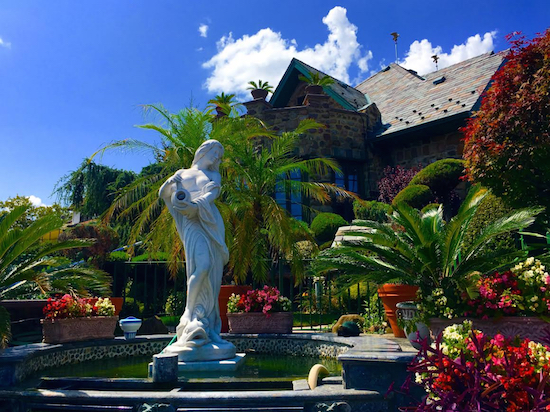See Dyker Heights without its famous holiday lights
Eye on Real Estate: Mediterranean villas, waterfalls, statues and other eye candy

Dyker Heights is in its full late summer splendor, as we can see with this waterfall and statue at 8302 11th Ave., reminiscent of a Mediterranean villa. Eagle photos by Lore Croghan
These aren’t vacation snapshots of villas on the Mediterranean.
But if you glance quickly, you might think so.
There are waterfalls, graceful statues, palm fronds in the landscaping and stone and stucco mansions.
Unless you live in the neighborhood where these homes can be found, you might not recognize this scenery in the light of day.
